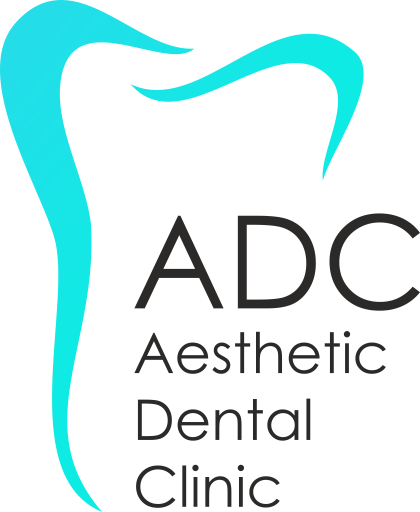Treatment of Periodontitis
The problem
Periodontitis is a serious gingival inflammation that destroys the soft (gum) and hard tissues (bone) that surround and support the teeth.
Periodontitis is the development of gingivitis. In the beginning there is gingivitis that occurs when you do not brush your teeth well or often, the gums may start to bleed. The gums begin to swell more or less and may change color. These are symptoms that there is gingival inflammation, called gingivitis.
Periodontitis can cause exposed tooth roots, increased tooth mobility and tooth loss.
One of the major problems of periodontitis is that it is not reversible, meaning that the bone tissue lost cannot be restored as opposed to the loss of soft tissue that can be restored and returned to normal levels.
Periodontitis as a disease can be cured and have healthy tissues, but the bone tissue that has been lost cannot be restored and restored as it was before the disease.
A proper panoramic x-ray is definitely needed for a proper diagnosis of the disease.
Periodontitis – Signs and symptoms.
In the early stages, the effects of periodontitis have very few symptoms, and in many patients the disease may have progressed significantly before seeking help and treatment.
Symptoms may include:
- Redness and / or bleeding of the gums, especially after tooth brushing and the use of dental floss or interdental brush (this symptom can even occur in gingivitis).
- Intense red or purple gum color.
- Gingival edema (swelling).
- Gaps between the teeth.
- Oral odor, or bad breath, and a persistent metallic taste in the mouth.
- Gingival recession, resulting in root sucking and noticeable elongation of the teeth. (This can also be caused by clumsy brushing or using a hard toothbrush).
- Gingival rash.
- Periodontal pockets between the teeth and the gums (a “pocket”, that is, a gap between the teeth and the gums, which increases as the disease progresses and the depth of the “pocket” increases).
- Tooth mobility depending on the progression of periodontitis we have and similar mobility (although this symptom may occur for other reasons, such as poor occlusion).
- Change the way your teeth touch each other when you bite.
- Tooth rotation, deflection or movement.
Patients should realize that gum inflammation and bone destruction are largely a painless and long-lasting process.
Therefore, patients may mistakenly assume that a painless bleeding after tooth cleaning is insignificant, although this may be a symptom that there is active periodontitis that is progressing.
Causes
In most cases, periodontitis begins with the dental plaque – a sticky membrane consisting mainly of bacteria. If left untreated, the dental plaque will turn into stone (stone) and then gum inflammation (gingivitis), and if persisted for a long period of time without treatment it may eventually progress to periodontitis.
This process from the formation of plaque to the formation of periodontitis may take many years to occur.
Everyone’s susceptibility to developing periodontitis and the rate of destruction are not the same. It is affected not only by heredity but also by other diseases such as diabetes or even some habits such as smoking.
The most common causes of periodontitis are:
- The dental plaque created on the surface of the teeth.
- The dental plaque that, if left for a few days, will harden and create the sting (dental stone).
- Poor oral hygiene.
- Hormonal disorders.
- Genetic history.
- Some medications.
Treatment of Periodontitis
Treatment can be either with an ultrasound machine or with hand tools, in addition to special medication or laser combination.
At our dental clinic we use the Swiss protocol for the treatment of periodontitis. Where special care is done to maximally remove dental plaque from tooth crown and tooth roots, as with a special “edge” it penetrates into the periodontal pockets and effectively cleans the entire surface of the tooth root, removing all the teeth in parallel of the teeth.
The purpose of the treatments is to remove dental plaque, sub-gingival and supra-gingival dental stone, eliminate periodontal pockets, inflammatory tissues and smooth the roots of the teeth so that re-adhesion and recurrence of periodontitis would more difficult.
If periodontitis is not advanced, treatment may include less invasive procedures such as:
Radical scraping is one of the most common treatments and may require 2 or 4 appointments depending on whether the treatment is per jaw or quadrant.
To facilitate the patient deep cleaning will be done by administering a local anesthetic. So the patient can be sure that there will be no pain and no sensation during the treatment process.
In mouthwashes containing chlorhexidine. The dentist gives these solutions for a short period of time in cases of gingivitis and periodontitis, but if they continue to be used for a long time then they cause tooth discoloration, but they leave with a simple polishing of the teeth by the dentist.
Teeth are cleaned using a special ultrasound device, or hand tools called scrapers, or a combination of these. The use of all the tools is quite important as they serve different purposes for removing the supra-gingival and sub-subgingival plaque and tartar from the teeth.
When the dental plaque removal procedure is completed, the next step is to “smooth” the surface of the tooth root. An effective treatment to help regenerate the gums, reducing the depth of the periodontal pockets in a short period of time and reducing the risk of developing periodontal disease.
Following treatment, if necessary, we can administer medication that will help to neutralize the microorganisms and speed up the healing of the gums.
In many cases, laser can also be used as a supplement to disinfect follicles and soft tissues and to reduce pathogenic germs.
The end of the procedure involves “polishing” the surface of the teeth with air polishing, using the Swiss EMS special instruments, removing surface pigments on the existing teeth, thereby improving the appearance of the patient’s teeth.
Treatment may also include surgery in advanced cases.
Surgery can range from a simple ileectomy to a more complex procedure.
Post-treatment stage
It is normal to have slight pain in the teeth and gums after a thorough cleaning by the dentist, especially if there is a sensitivity problem before surgery.
Removing the irritants reduces the inflammation of the gums, which appear to recede, revealing the true dimensions of the gum recession caused by periodontitis.
For a few days after treatment the gums may be irritated, sensitive, and may bleed slightly, which will return to normal day by day.
The result
The time taken to completely restore morphology as well as perhaps a local scarring sensitivity is from a few days to a few weeks. After this time, the bleeding in the patient’s gums will be reduced as he brushes them, as will bad breath. The patient will feel his mouth more clean and light after treatment.
In order for treatment of periodontitis to succeed, there must be cooperation between the dentist and the patient. The patient at home should take care of their teeth, brush them continuously, use interdental brushes, yarn as well as special toothpastes, toothbrushes and medicines recommended by the dentist to completely control periodontitis and periodontitis. .
It is recommended that a dentist review after a few weeks to evaluate the degree of healing of the gums and the reduction of the depth of the periodontal follicles, which is the critical criterion for the success of a periodontitis treatment as well as their bleeding.
Also, a patient with a history of periodontitis should be rechecked every 3-4 months to check his oral hygiene.
Research has shown that periodontal disease has been associated with other diseases such as premature and poor weight newborns, cardiovascular disease, diabetes mellitus, pulmonary diseases, rheumatoid arthritis and many others, mainly through inflammation and its effects. This means that periodontal treatment, apart from oral health, can also have beneficial effects in some cases on general health, always in conjunction with proper medical treatment.



